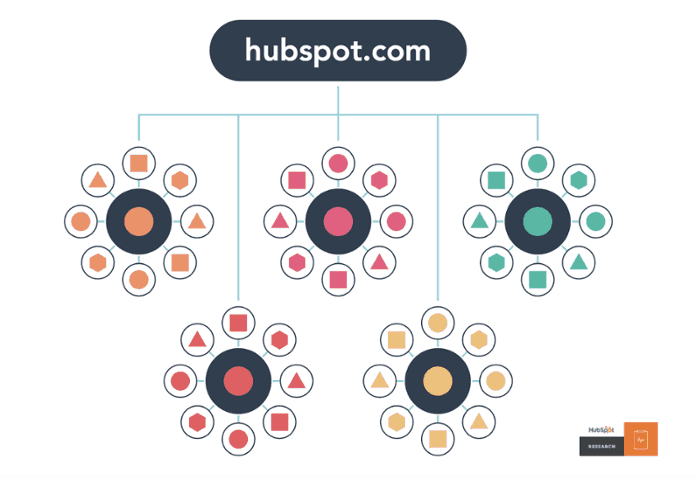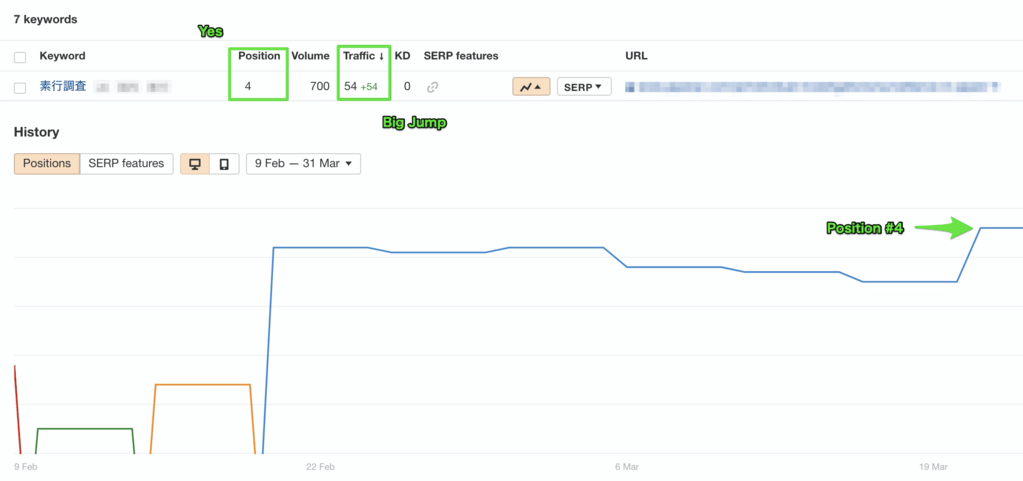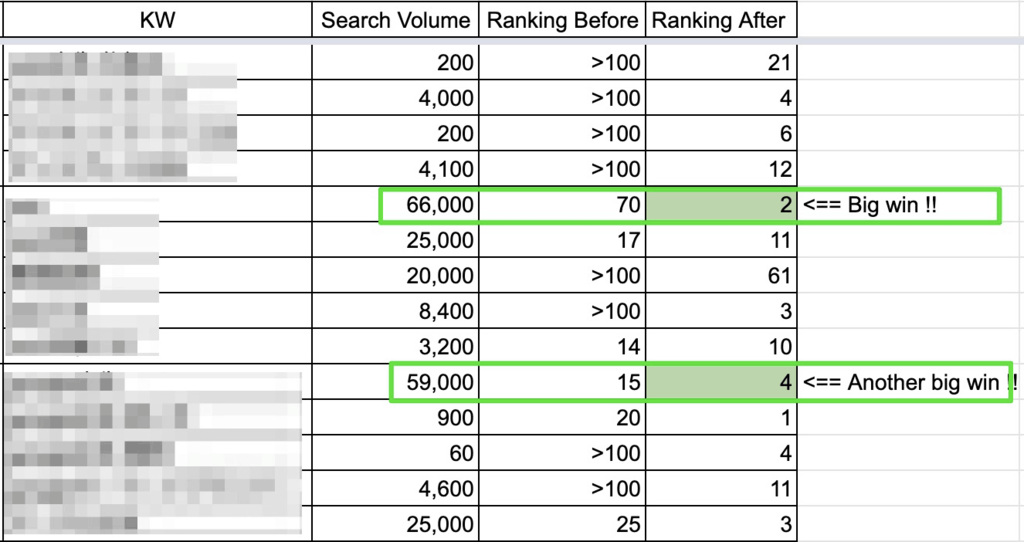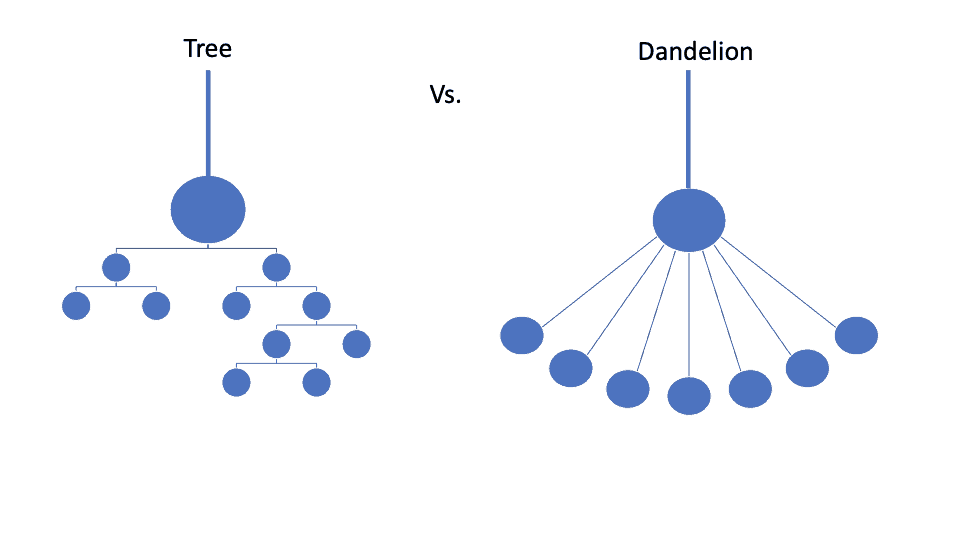
What We Learned from Implementing HubSpot’s Topic Clusters in Japan
Over the past 2 years, there has been a lot of discussion about Topic Clusters as an effective method for Content Marketing. Topic Clusters, also known as Pillar-Clusters or Content Silos, are a way of grouping content together to help attract search traffic. Google’s Hummingbird algorithm is designed to rank articles based on Themes, not just on keywords. This method praises the benefits of thinking in terms of “Topics” or families of keywords instead of individual keywords when creating content.
After having some success for a couple of SEO clients in Japan, we thought we would share with you what we learned during this time, and how you can benefit from this process. The lessons learned here can apply to both English and Japanese contents.
In this article, we will introduce Topic Clusters, then share what we learned when implementing this concept in Japan, and provide some results. Along the way, we will also point out special considerations for Content Marketing in Japanese.
Table of Contents
What are Topic Clusters? And Why Should I Care?
The Topic Cluster method is a way of organizing content to maximize for SEO. I think HubSpot said it best, so I quote from them directly:
SEO is now shifting to a topic cluster model, where a single “pillar” page acts as the main hub of content for an overarching topic and multiple content pages that are related to that same topic link back to the pillar page and to each other. This linking action signals to search engines that the pillar page is an authority on the topic, and over time, the page may rank higher and higher for the topic it covers. The topic cluster model, at its very essence, is a way of organizing a site’s content pages using a cleaner and more deliberate site architecture.
Hubspot subsequently followed up about the details of the Pillar-Cluster model in this article, and it is worth reading.
Here is what the HubSpot blog looked like before topic clusters.

And here is what it looked like after topic clusters.

As you can see, HubSpot has taken their morass of 1-off contents, and grouped them into tightly connected clusters, each focused on a particular topic.
About HubSpot, and Their Strategy
For those of you that don’t know, HubSpot offers sales, marketing, CMS, and customer service software. What I like about HubSpot is their approach to marketing. Rather than spend marketing budget on TV Ads, Magazine or even Pay-Per-Click Ads, they put nearly all their resources & effort into Content Marketing. They create awesome content that generates leads for their business. This strategy has paid off handsomely for them. They are experts in inbound marketing.
What We Did at Zo Digital
Following in their footsteps, we at Zo Digital Japan put forth our own initiative to group content into different topic clusters for our own clients over the last year. For our clients, we did keyword and content research, we created a content map and wrote content specifications for each piece of content in the cluster. We then gave content specifications to writers to turn it into pieces of content.
What We Learned
So far, the results so far have been excellent. More on this later. But along the way we learned a number of things. I will share them with you now.
Need to Commit Time to do Proper Keyword Research
If you want to get the benefits of a well structured contents map, and SEO optimized content, you will need to invest the time and money it takes to do the appropriate keyword research. You need to research the appropriate keyword terms, break up these terms into categories, and assign topics and sub-topics to keywords. Then look at what you have, then re-organize again. And this is all in addition to research each writer does for an individual article.
This effort takes time. The first time we created a content spec for a cluster, it took almost 40 hours. Over time, we have been able to get this number down to as low as 15 hours of our time, but typically it takes around 20 hours for a 10 to 15 article cluster. You need to budget for this time.
Content Planning is harder than it looks
Researching and defining clusters of content may appear to be easy, but in fact it’s a lot harder than it looks. See our Problems and Challenges section below for more details. Internally at Zo Digital Japan, we spent hours debating what is the structure or relationship of contents that will net us the most traffic. Most of the time, there is no perfect answer. And if you attempt to outsource to a low cost freelancer or VA for this research, you are likely to run into trouble. Be careful.
Need to have an overall Content Plan
Another thing we learned is you need to have a very clear plan for the contents you will create in the future. Not having a clear plan leads to “keyword cannibalization”, or 2 types of content competition for the same keyword.
We sometimes come across the case where an article really straddles between 2 different clusters. And we have to decide which cluster it belongs to. We want to avoid this kind of keyword competition as much as possible. If we have a good overall plan ahead of time, this kind of “content overlap” can be minimized.
Need to be careful of Synonyms
You need to be careful of how synonyms are treated in this process, especially when researching Japanese. When writing Japanese, there are 3 scripts (Katakana, Hiragana & Kanji). In addition, many Japanese will often search for Roman spellings. As a result, the same concept can often be expressed in different ways as synonyms. Here is one example of how Japanese people might search for “PPC Advertising” in Japanese. Most translators might translate this term as “ppc広告”. The monthly search volume is 2700. If you were to judge this keyword on volume, you might think it would not be appropriate for a Topic Cluster. However, when looking at synonyms, we see much more potential.
| Term | Monthly Search Volume | Comments |
| ppc広告 | 2,700 | No spaces |
| ppc 広告 | 300 | Half-width space |
| リスティング広告 | 21,000 | No spaces |
| リスティング 広告 | 600 | Half-width space |
Notice also that Google treats words without spaces and words with spaces separately.
Just for fun, here is another example, people searching for “Starbucks” in Japanese.
| Term | Monthly Search Volume | Comments |
| Starbucks | 34,000 | Roman character spelling |
| スターバックス | 194,000 | Spelling in Katakana |
| スタバ | 355,000 | Abbreviation in Katakana |
A fair number of people search by the Starbucks name in Roman characters. But even more search for this brand in Katakana, and a Katakana abbreviation. (Interestingly enough, this is despite the fact that almost all Starbucks branding is in English characters in Japan).
Due to the difference between Roman & Katakana characters, and also the fact that Japanese often like to shorten terms, we need to take into account synonyms more when analyzing search volumes compared to English.
Need to Think in Aggregate KW Volumes Instead of Single KW Volumes
Let’s face it, we all have limited resources to develop new content. Blog writers cost money. It also costs our own time to set up and manage the process. And we need to be sure we can get a return from our investment. We need to choose our battles carefully. From our experience, making these strategic decisions based on the search volume of a single keyword is a bad idea. instead is better to aggregate the keyword volumes for each topic, then decide relevance.
Only then can we make the best decisions.
Let me give an example of how making decisions based on single keyword volumes can give misleading results. Consider the keyword “SFA”, which stands for “sales force automation”. It has 13,000 searches per month in Japan. This might sound like a pretty good topic to target for a Topic Cluster.
However, upon further inspection, we find that the keyword volumes of child terms drop off very quickly. And many of the terms are just variants of the head term. We will be hard-pressed to write a cluster of 5 or 6 articles to target this keyword.
| Keyword | Volume |
| sfa | 13,000 |
| sfaとは | 2,000 |
| 営業支援システム | 600 |
| sfa crm | 250 |
| crm sfa | 250 |
| 営業 管理 システム | 200 |
| sfa システム | 200 |
| sfa 意味 | 200 |
| 営業管理システム | 150 |
| sfaシステム | 150 |
Let’s contrast this with another keyword, ウェブ広告 (web advertising), which has 2900 searches per month. This is much less than “SFA” above. By just looking at the head terms, why bother targeting this keyword?
Let’s take a look at the top 10 keywords.
| Keyword | Volume |
| web広告 | 2,900 |
| web広告 種類 | 1,100 |
| web広告 費用 | 200 |
| web広告 仕組み | 200 |
| web広告 会社 | 100 |
| web広告 代理店 | 100 |
| web広告 効果 | 90 |
| web広告 種類 | 70 |
| web広告 英語 | 70 |
| web広告 用語 | 60 |
While the search volumes are clearly smaller, the subject range of the topics are much greater. I could see creating 6 articles based on the keywords we see here.
But in addition to that, there are some major synonyms to consider as well. (“Net Advertising”).
| Keyword | Volume |
| ネット広告 | 2,700 |
And then there are terms that are subordinates of that term. (“Internet Advertising”)
| Keyword | Volume |
| インターネット広告 | 1,200 |
Finally, within that topic, there is this term “PPC Advertising” written in 2 ways. Not that the second term is much more popular than the direct translation.
| Keyword | Volume |
| ppc広告 | 2,700 |
| リスティング広告 | 21,000 |
So when you start adding up keywords, not only do you find a lot of independent terms that make good supporting articles, but you also find some sub-topics. For example, PPC advertising is a type of Web-Advertising.
Unfortunately, there is no simple tool in AHRefs, SEMRush or any others that effectively gets you all the relevant keywords in a topic. There is no simple way to do this. You need to do the research to identify keywords, including “chunky-middle” and “long-tail” terms as well as alternate spellings, synonyms, and more. Only after summing this volume can you get a clear idea of the potential keyword volume of a particular topic.
Although it takes manual work to calculate aggregate volumes. The time you put upfront will be gained back later, as your content writers are fully optimized, writing keyword-driven content that brings maximum traffic to your site.
You will have keyword overlap
No matter how well you research or plan your content, you will have some “keyword cannibalization” (AKA keyword overlap), that is 2 articles competing for the same keyword. When crafting your overall contents strategy, or specifying a particular cluster, you need to think ahead about minimizing keyword cannibalization as much as possible. In general, you really don’t want 2 pages begging for the same keyword, but some is expected.
Having an overall strategy will help to minimize keyword overlap.
Not all articles need to target keyword volumes
When specifying topic clusters, you might be tempted to just target the high volume keywords to maximize your traffic. After all, your writer’s time is a limited resource. why should you waste your time on low volume or even no-volume keywords at all? As it turns out, there are a number of reasons to include this content, and we list them here.
Top Reasons to Include Low Keyword Volume Content in Your Silos
- Linkable Content
- Follow-on Articles
- Unique and Interesting Stuff
- Targeting High-Transaction Keywords
Here is a description of the 4 reasons low-volume keyword content should be included in a Topic Cluster
1. Linkable Content
Linkable content such as infographics, expert roundups, or data analysis can help build backlinks, which will elevate your site’s authority in the eyes of Google. Even though the search volume for this type of content is low, it’s absolutely worth the effort to have at least 1 article in each cluster that attracts links.
2. “Follow-on” Articles
SEO is just an entry point into your site. But once visitors are on your site, you need to keep them engaged. Having a good 2nd and 3rd article after the initial article will help. These articles don’t need to be optimized for keyword volumes. Instead, they should be optimized for keeping people interested in your content.
3. Unique and Interesting Stuff
Sometimes your writers will invent totally unique and interesting topics that people don’t search for.
4. Targeting High-Transaction Keywords
There are some keywords that have very low volume, but extremely high transactional intent. They can bring you a lot of money to your business. One of our clients offers training aimed at HR administrators & executives. Search volume is very low, but the transaction potential is really high.
The key point here is not all articles in a cluster need to be targeted for search volume. You also should have a budget for also having the 4 types of articles above.
Still Need Good Writers and Good Content
Having a good cluster with well-structured content does not replace the need for good writers. If a bad writer that writes poor content, it is still going to fail the Google Sniff Test. You may find your content gets boosted temporarily, then slowly fall off page 1, and descend lower and lower as people give up on your content. Finding good writers in Japan is tough like it is with English. Finding good bilingual writers in Japan is even more difficult.
Need to Budget Time To Improve Articles
The articles you write will have mixed results. Some will do fantastically well, others will still miss the mark. For those clusters that fail to meet your goals, you will need to budget time to go back and re-research and re-write topics.
At Zo Digital, we use Rank Tracker type tools as well as Google Analytics to track our progress and find topics that need improvement.
Effectiveness of the Topic Clusters
As a Content Marketing Strategy does the Pillar Cluster system work? Or more importantly, do we get an effective ROI for the effort we put in?
When Aja Frost from HubSpot presented at the Tokyo Digital Marketers event in July 2019, she disclosed HubSpot was able to grow their blog by 4.4 million visitors in one year by adopting this strategy.
For Zo Digital, we had one client that was not even ranking for a particular keyword class we wanted to target. After creating a spec, writing articles, and putting them into a cluster, we went from unranked to the #4 position in 4 weeks for a medium-difficulty keyword.
KW: 素行調査 (“surveillance investigation”)

And not only the target keyword, but we also ranked our clients for dozens of similar terms or like terms of this head term. The net result is this change brought a lot of high-relevance traffic to this site for this very competitive term.
One could say if we just wrote some random articles about the topic. However, I find it difficult to see how we could rank so highly so quickly for this term.
For another client, they already had about 50 articles on a particular topic, for a very competitive keyword that gets 66K of Japanese search traffic each month. The best they could do was rank #70 for this term with those 50 articles. But after specifying and implementing a nice topic cluster, (5 new articles, and revised another 10 or so articles), we were able to push them from #70 all the way to #2 in Google Search Results. This has brought a huge gain in traffic for this client.
For another keyword for a different cluster, our client went from #15 (middle of page 2) to #4 (Page 1) for a keyword with 59K monthly searches. This is another big win.

It’s safe to say, YES this technique works.

Problems, Challenges, Debates, and Unanswered Questions
As mentioned before, structuring your content into well-defined Content Silos, is a lot more difficult than you think. Inside our team, we have had hours of debates about what is the best structure. And in many cases, there is no right answer. In many ways, we are still learning.
Here are some open issues that we still debate internally. Perhaps we will know more after testing and seeing more results.
“Tree” Structure vs a “Dandelion” Structure?

Which way is better? A hierarchical tree structure of content, or a series of completely siloed content that looks like a dandelion? (Some say “Lollipop”). HubSpot’s articles seem to indicate the latter is better. For me with my engineering background, I tend to think in terms of hierarchy, so I favor that way.
The different approaches to organizing Content Hubs is discussed in this article by Kane Jamison on Content Harmony.
Targeting a KW with an H2 tag in the Pillar Page, or H1 tag in a Child page?
This question alone torments us for hours at a time. Over time we hope to develop best practices.
Is it OK to add in site-internal links to outside the cluster?
By linking outside your cluster (internal link to outside of your cluster), you threaten to break the cluster structure, or seriously dilute it. But many times, a link to outside if your topic cluster can be really helpful to readers of your content.
Do you target based on search patterns or logical structure?
This is another challenging topic for content marketers.
Here is an example of this issue. Most marketing experts agree there are 3 types of media, “owned media”, “earned media” & “paid media”. Each of these terms have keyword volumes in Japanese.
But what if you want to create a cluster of these 3 types of media? The problem is there is no accepted term to use in English. Luckily in Japanese, we have the term “Triple Media” (トリプルメディア). However, the monthly Search volume is not so great.
| Keyword | Translation | Monthly Search Volume |
| オウンドメディア | Owned Media | 24,000 |
| アーンドメディア | Earned Media | 9,000 |
| ペイドメディア | Paid Media | 500 |
| トリプルメディア | Triple Media | 9,000 |
So the question is, do you create a logical structure, and target “Triple Media” with your target phrase. Or rather, do you target these highest volume keywords (“Owned Media) with your Pillar Page? And therefore create an “illogical” structure?
It also begs the question, do you target a zero volume keyword with a topic cluster?
As we learn more about content silos, we’ll develop better practices and have more answers in the future. Those SEO experts or anyone that has experience in structuring content, we welcome your opinions.
Summary
Whether you call them the Topic Clusters, Pillar-Clusters or just plain Content Silos, it appears that Google is now favoring clusters of well-structured contents for SEO. HubSpot says they got a huge improvement by restructuring content. And we have achieved some incredible gains for our clients as well in Japan.
However, it’s not a simple process, and you need to have a good overall plan, and you need to spend the time to do effective keyword research around topics to enable your content writers to perform. However, following this model you will likely see big benefits in Japanese or any other language.
If you would like help with Content Marketing in Japan, please visit our SEO Services Webpage for more info.
About the Author Jeff Crawford
Jeff Crawford is a Digital Marketing expert, technologist and Manager. He has worked for technology companies in Silicon Valley such as Apple, WebTV and Microsoft. He has lived in Tokyo Japan since 2004, working for companies such as Microsoft KK and Adobe Systems Japan. Jeff is founder of Zo Digital Japan, an SEO and Digital Marketing agency based in Tokyo. Jeff started the Tokyo Digital Marketers Meetup in 2016, which now has over 2000 members. He has also presented about Digital Marketing at such events as Ad-Tech Tokyo, WordCamp Tokyo, Japan Market Expansion Competition (JMEC), and the Japan Association of Translators (JAT).
